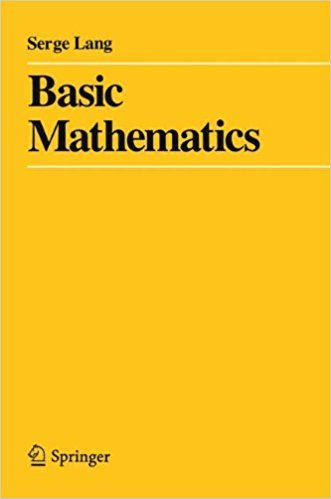Learning Physics | Part 1: Mathematical Preliminaries
Physics is one of those branches of science that amaze people. The wide range of topics from quantum mechanics (and its applications on modern technology) to cosmology (and its implications to the nature of time) leave people at awe and rethinking the way they perceive reality. This is made clear in the number of youtube channels that feature physics and the number of their followers. Despite this, there is a relatively low number of physics majors. So how is physics infamous as a major but famous in popular media?
I think the reason physics is infamous among students is because of the mathematics around it. This goes the same way for majors like (most especially) math, applied math, and engineering. Physics and engineering are highly mathematical because they involve measurements, and making predictions based on those measurements. To be able to do that, they need mathematics as a tool. One cannot do physics without dealing with math; even the simplest or most experimental topics.
Given that, here are the basic mathematical preliminaries of physics.
College Algebra and Trigonometry
In making predictions, we would like to express the relationships of variables in an equation or a formula. Say for example, Newton's second law of motion: a = F/m, which reads as: the acceleration of an object due to a force applied on it is directly proportional to the force applied and inversely proportional to the mass of the object. We know this equation more as F=ma. This is where algebra comes in. Algebra gives us the set of mathematical rules to manipulate equations including those with imaginary numbers ( square root of -1). In some cosmic coincidence, following the rules of algebra gives theoretical calculations that agree with experimental results.
In addition to algebra, trigonometry is also a prerequisite of physics. Trigonometry is the study of angles in triangles and how it is related to certain lengths. This is very important in physics because directions can be measured in angles. Also, in many physical systems, angular position (position as defined by the angle of something with respect to a certain reference axis) are used to define some properties. Trigonometric entities can be manipulated algebraically through strict rules.

Learning Algebra and Trigonometry
To learn algebra and trigonometry, I highly suggest reading Serge Lang's Basic Mathematics. It was beautifully written and is easy to follow for a reader with minimal mathematical background. I also know someone who developed a passion for physics and mathematical thinking because of reading and carefully following the guidance of the book. The person had an MA in humanities and is now training to be a materials physicist.
Another recommendable book is Leithold's College Algebra and Trigonometry. Also, if getting the hang of it by just reading proves to be too difficult, you can follow patrickJMT's youtube channel for explained and worked out examples (this channel helped me a lot in my math courses).
Algebra and trigonometry opens a lot of doors and opportunities as they can be applied in many other things other than physics. To put it simply, learning them is one of the best investments a man can do.
walang kamatayang Leithold. yung makapal na book :) for math 26, 14 and 11. I miss college :)
na-revolutionize kasi ni Leithold ang teaching method sa mathematics kaya very instrumental yung libro niya at laging recommended
true!
Math is my favorite. ☺️😊☺️
yay for math!!
Congratulations @laphysique! You have received a personal award!
Click on the badge to view your Board of Honor.
Do not miss the last post from @steemitboard: